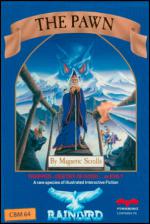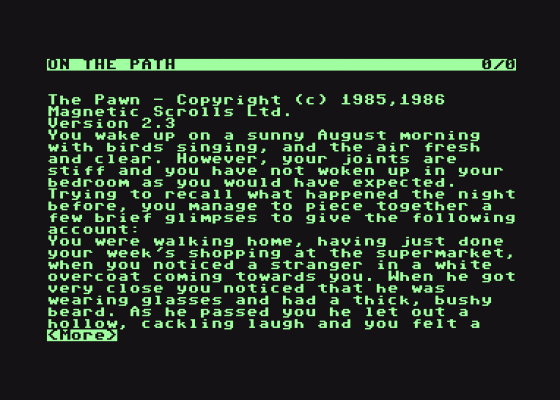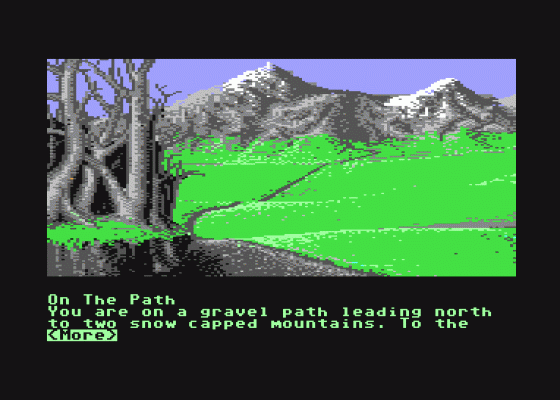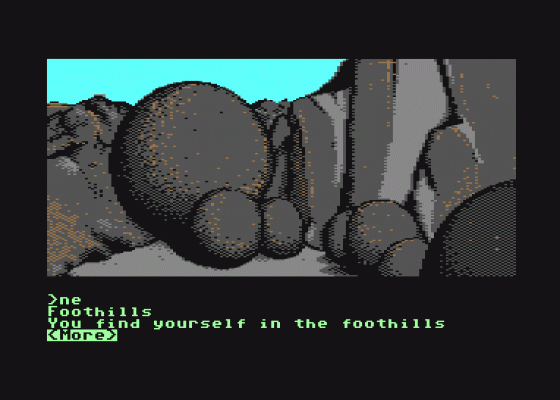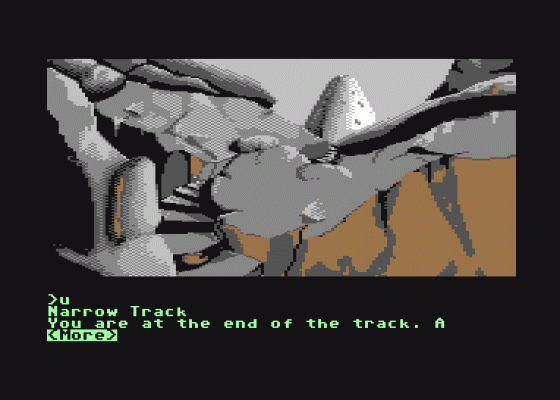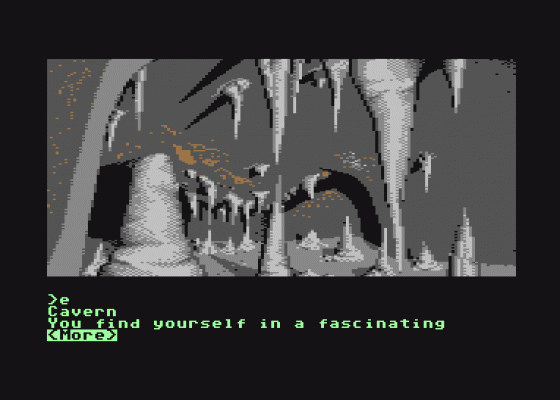
Computer Gamer
 1st December 1986
1st December 1986
Categories: Review: Software
Author: Gordon Hamlett
Publisher: Rainbird
Machine: Commodore 64
Published in Computer Gamer #21
The Pawn
Gordon Hamlett checks out the moves in Rainbird's latest adventure
Charting the development of computer games is usually fairly straightforward. An arcade game is translated onto the popular formats or a game is written, for example, on the Spectrum and then converted for Commodore and Amstrad. The history of The Pawn is likely to feature in Trivial Pursuit games for many a year to come.
Originally written for the Sinclair QL (Remember that one?) as a text only game, its next appearance was on the Atari ST complete with stunning graphics followed by a quick conversion to the Amiga. Only then did it make the retrograde step to the humble C64.
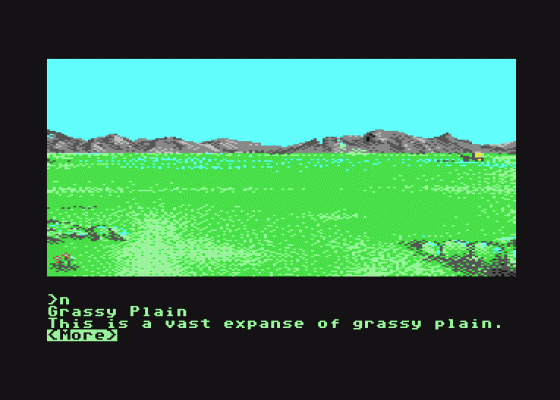
The Pawn in question is you. Walking home from the supermarket one day, a chance encounter with what you later realise must have been a wizard, leaves you standing in the middle of the path wearing a strange silver armband. After wandering around a bit, you soon realise that you have been caught up in a three way power struggle between a weak and ailing king, Kronos a magician and the would-be leader of the dwarves, a certain Gringo Baconburger who is currently standing for election and whose political posters adorn the land.
The land of Kerovnia is equally strange. To the north lies a range of huge mountains. To the west lies impenetrable forest. Although you would love to travel south, you find you are unable to do so because you cannot cross the thin red dotted line which lies in your way. The only way to cross is to drop everything that you are carrying and the silver armband steadfastly refuses to budge.
You don't have a great deal of success to the east either. The wizard Kronos asks you to deliver a note to the king in the palace but as soon as he reads it, you are forcibly removed from the royal enclosure. And still you have no idea exactly what it is that you are supposed to be trying to do.
Giggling Guru
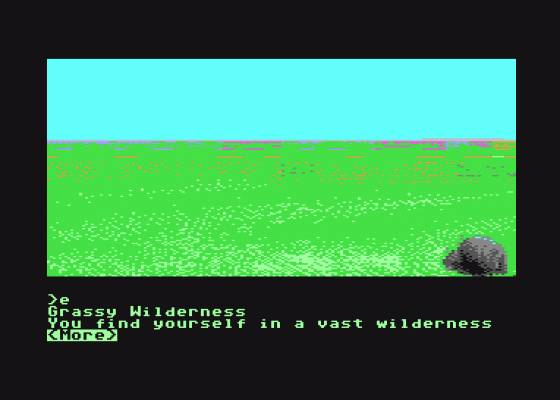
Your problems soon multiply. There is a little hut in the hills complete with resident guru who falls about laughing when he sees you. You discover a doctor in a tree and even if you succeed in getting through it, you need to find a light source.
A huge boulder blocks your way to the north and if you succeed in getting past it, there is still a snowman in front of an ice tower to get past and some alchemists arguing about whose turn it is to get the supper. You suspect that you should be doing business with Honest John, the local trader, but a slight lack of funds leaves him muttering under his breath something about a wife and kids to support.
The main selling point of the game is undoubtedly going to be its graphics. Not every location is illustrated but those that are, are very well done indeed. Each picture has to be loaded in separately from disk but the wait is certainly worth it.
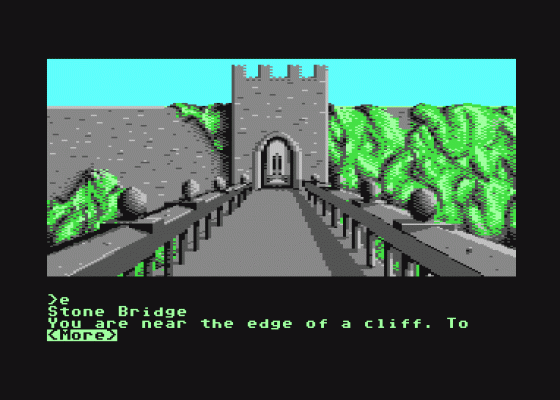
Although not up to Amiga standards for obvious reasons, the pictures are very detailed and knock spots off anything seen previously on the C64. There are various options if you don't want to wait for the pictures to load in. The accompanying text is copious and the game could easily be played as purely text only if you desire.
Alternatively, you can opt for just a cameo picture in the top right corner of the screen. After you have played the game a bit and know your way around, this is probably the best mode to play in. If you come across somewhere new, you can soon switch back to the full picture again.
Parsing My English
Rainbird are obviously trying to outdo Infocom in the state of the art parser - the bit of the program that understands your inputs. Sentences such as "Take the metal key out of your pocket and unlock the door with it then open the door and go north carefully" are meat and drink to the program. You can also use "it" and possessives in your sentences. For example, Get the goblin's sword and kill the ogre with it.

This all makes for very easy adventuring as there is no need to spend ages looking for exactly the right phrase or combinaton of verb and noun.
Give Us A Clue
Such is the size of the game (mostly due to the pictures!) that it comes on two disks. The packaging is completed by a sixty page booklet which contains a (not very good) novella and a hint section. Before you decide that this would spoil the game as you would be tempted to look at the answers.
I should explain that the hints are in code and they are misleading. The code is not one that you will crack easily so you must type in the rows of characters and numbers into your C64 after requesting a hint. There are normally three levels of answer associated with each clue and the sort of help you get back varies considerably. You may get a cryptic clue of sorts or be told that you need more points before that particular answer is revealed to you.

Some of the clues are downright misleading but I will leave you to find out what they are for yourselves. The book is also required as a security item, for you are often asked what is the third word on the eighteenth line of page twenty-two or similar. This is an excellent anti-piracy device and no, don't try ringing up Rainbird saying that the dog ate my copy or whatever... they have heard all the excuses before!
The Pawn is certainly a challenging game with some highly original problems and scenarios - in what other game can you in two separate uses for your shirt?
The graphics add considerably to the descriptions and so it comes down to the big question of whether or not it is worth forking out twenty quid for a copy. Infocom games cost most and don't have the graphics, but they do have an edge in their storyline.
Yes, it is a very good game but I think that the fickle British publlic will baulk at the price. In the States where they are used to paying good money for good software, it will do very well indeed though.
Maybe it's one to ask Santa for.
Other Commodore 64 Game Reviews By Gordon Hamlett
Scores
Commodore 64 Version| Graphics | 100% |
| Atmosphere | 80% |
| Addictiveness | 80% |
| Friendliness | 80% |
| Overall | 85% |

